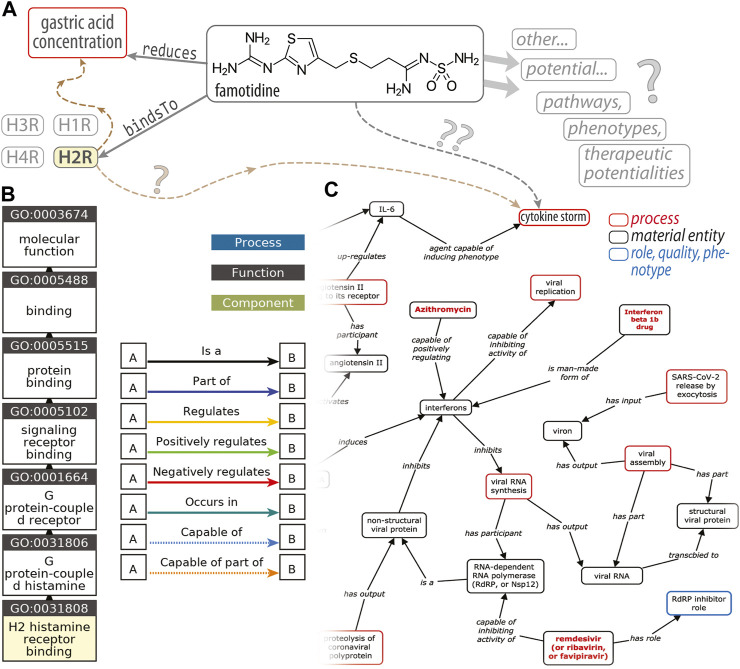FIGURE 1.
An ontological perspective on famotidine and COVID-19. This diagram (A) illustrates the types of RDF triple associations, consisting of a (subject, predicate, object) triplet, that express the relations between entities that underlie an ontology. In this simplified example, one such triple would be (famotidine, bindsTo, H2R) (histamine type-2 receptor) and another is (famotidine, reduces, gastric acid concentration); H1R, H3R and H4R denote other subtypes of histamine receptors. The brown dashed arrows (at left) are placeholders to signify the H2R‐triggered signaling cascades that ultimately modulate gastric acid levels. Question marks (“?”) decorate linkages where our knowledge is either quite tenuous or vague. The GO “ancestor chart”, in (B), illustrates a concept hierarchy for the term GO:0031808, corresponding to a particular molecular function named “H2 histamine receptor binding”; traversing this concept/class hierarchy, from the leaf (bottom) to the root (top; “molecular function”), corresponds to a traversal of successively broader categories of concepts/classes [e.g., the H2R is_a type of (i.e., a subset of) GPCRs]. Panel (C), adapted from Liu et al. (2021), is an excerpt of a KG of host–coronavirus drug/interactions, including at the upper-right a putative link between famotidine and the cytokine storm.

